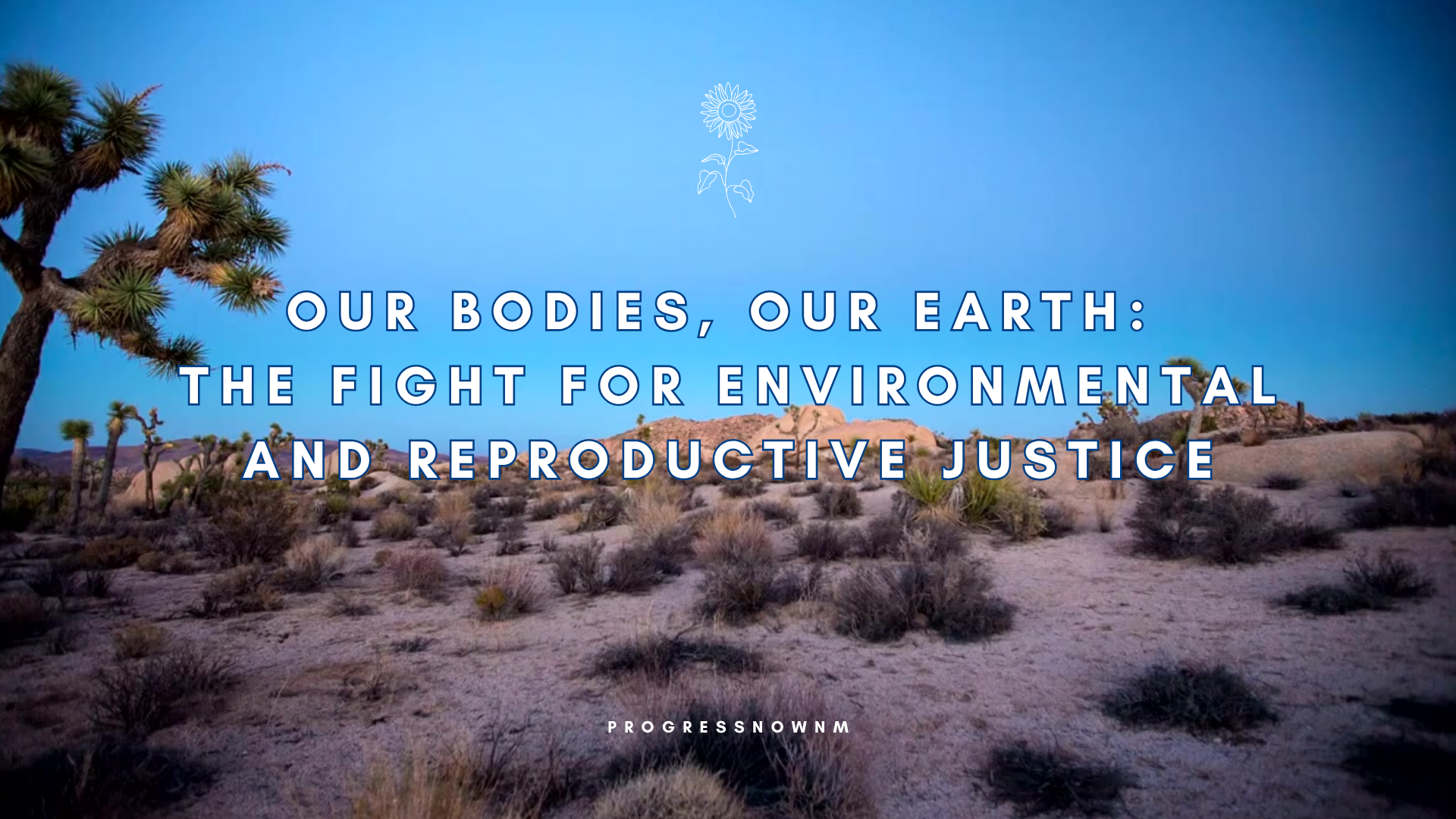If you’ve been following us on Facebook, Instagram, or Youtube, you’ve seen our educational series breaking down how reproductive and environmental justice overlap in our lives. We’re excited to offer you an overview of the series in blog form — for those of you who prefer to read!
We begin part one of our series with an introduction to the deeply intertwined nature of reproductive and environmental justice.
While environmental justice means ensuring everyone has access to clean air, water, and land, free from toxic pollutants, reproductive justice is about guaranteeing that all people have access to the care they need and control over their own bodies, health, and reproductive choices. But what happens when environmental pollutants threaten the very foundation of our ability to access care and maintain our health?
Environmental injustice leads to devastating consequences for reproductive health, including increased pregnancy complications, birth defects, childhood illnesses, and other serious health problems — especially for marginalized communities, who bear the brunt of environmental and health inequities. Agricultural risks such as pesticide exposure further compound these issues — especially for the people who grow our food and are often the most vulnerable to these hazards.
Part two of our series explores the specific challenges faced by pregnant people living in New Mexico, where many regions are considered maternity healthcare deserts with limited access to OBGYN services and maternal care. These healthcare deserts, combined with severe weather events like heatwaves, droughts, and wildfires, make pregnancy even riskier. Indigenous communities, rural residents, and BIPOC populations — who are more likely to live near flood-prone areas, wildfire corridors, or zones with poor air quality — face systemic barriers to healthcare and emergency support. Exposure to chronic health conditions caused by pollution and climate change increases the likelihood of complications such as preterm birth, gestational diabetes, and stillbirth. Rising temperatures and air pollution during pregnancy have been linked to increased risks of low birth weight, preterm birth, and even neurodevelopmental disorders like autism spectrum disorder.
In part three, we cover the ways in which children are particularly vulnerable to the climate crisis. Their developing bodies and immune systems mean they face greater risks from extreme heat, air pollution, malnutrition, and mental health disorders related to climate disasters. Heat waves, wildfires, hurricanes, and droughts threaten their physical safety and disrupt the stability of families and communities — foundations critical to childhood development.
In New Mexico, places like Loving and Lybrook suffer from dangerously poor air quality due to oil and gas operations, affecting children’s health and academic performance.
Our series emphasizes that addressing these issues requires community education, climate resilience policies, and sustainable practices like reducing emissions and promoting active transportation and renewable energy.
Unfortunately, environmental challenges extend far beyond physical health, impacting mental well-being and social structures as well — a topic that we cover in part four. Indigenous people face cultural loss as traditional landscapes and their livelihoods are threatened. With rising temperatures and extreme weather events contributing to eco-grief, housing insecurity, and increased rates of domestic violence and hate crimes, these compounded stressors highlight the need for a holistic approach that integrates mental health support, social equity, and climate resilience.
Finally, in part five of our series, we looked at the agricultural impacts of the climate crisis in New Mexico — a vital industry that is highly vulnerable to rising temperatures, drought, and changing precipitation patterns. These changes threaten crop yields, food security, and water quality, which have negative ripple effects on public health and local economies. Recent legislation like the Pollutant Discharge Elimination Act aims to strengthen pollution controls and protect water resources, but much more work is needed to implement climate-resilient agricultural practices and sustainable water management.
As we close this series, we invite you to carry these insights forward — not as an end, but as a call to action. These issues are deeply connected and rooted in a system that values profit over people and control over care. But we know another world is possible: one where everyone, regardless of race, income, gender, or geography, can breathe clean air, raise healthy families, access respectful healthcare, and live on land that is honored and protected. The fight for environmental and reproductive justice is the fight for life itself. Let’s keep pushing, organizing, healing, and imagining together — because thriving is not a privilege, it’s our right.
Thank you for joining us on this journey. Be sure to watch the videos for a deeper dive into all of the topics we’ve covered! And if you enjoyed this series, go subscribe to our YouTube channel and weekly email — your go-to source for the latest in progressive news from across New Mexico. Together, we can build a healthier, more just, and sustainable future for all.
All of our sources are located in the video descriptions on YouTube

